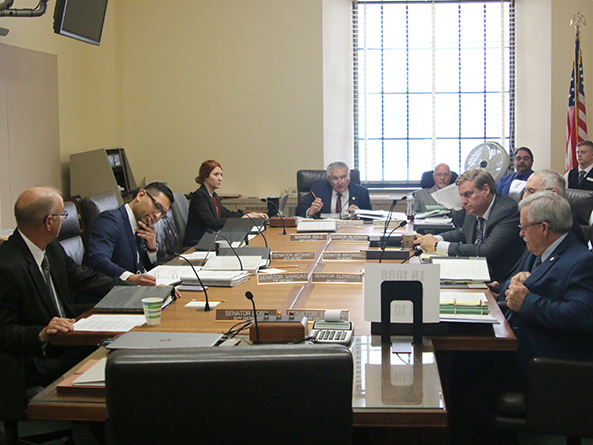Budget adjustments offered
Mid-biennium adjustments to the state’s budget were considered by the Appropriations Committee Jan. 29. The state budget is structured on a two-year basis, with the budget passed in odd-numbered years and adjustments made during legislative sessions held in even-numbered years.
Three bills, introduced by Speaker Jim Scheer of Norfolk at the request of Gov. Pete Ricketts, comprise the governor’s mid-biennium budget recommendations:
LB1008 which would provide, change and eliminate state appropriations;
LB1009 which would transfer funds, repeal a fund and change the use of a fund; and
LB1010 which would change provisions relating to the state’s Cash Reserve Fund.
Presented to the committee by State Budget Administrator Gerry Oligmueller, the bills would make adjustments in the current fiscal year ending June 30, 2020, as well as the next fiscal year. Oligmueller said after the biennium budget was passed, the state collected $176.4 million more in general fund tax receipts than forecast.
Since then, he said, the Nebraska Economic Forecasting Advisory Board has raised its biennium budget projection of general fund tax receipts by $160.9 million for FY2019-20, resulting in $337.3 million in available funds for the current budget year.
The governor’s budget adjustments recommend using $109.4 million—32 percent of that total—for one-time, disaster related repair costs, state building repairs and patient safety measures at the Lincoln Regional Center.
The remainder would be used to increase the state’s cash reserve balance to $507 million.
Among other provisions, LB1010 would transfer $62.6 million to the Governor’s Emergency Cash Fund. That amount would include $50 million for the state’s share of the estimated $400 million in repair costs related to the 2019 floods. It also includes $9.2 million for the state’s hardest hit counties and $3 million to maintain the fund’s reserve for future emergency events.
Testifying in favor of LB1008 and LB1010 was Larry Dix, executive director of the Nebraska Association of County Officials. He said more than 80 of Nebraska’s 93 counties received disaster declarations due to last year’s flooding, and several others barely missed the federal damage cutoff for a declaration.
Many areas of the state suffered significant infrastructure damage, particularly to roads and bridges, he said.
“Some counties would anticipate that—without additional assistance—it would be five to seven years before they’ll be able to replace some of those bridges [that were destroyed],” Dix said.
No one testified in opposition and the committee took no immediate action on the bills.


